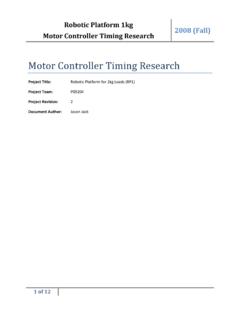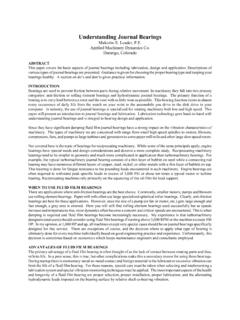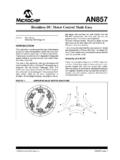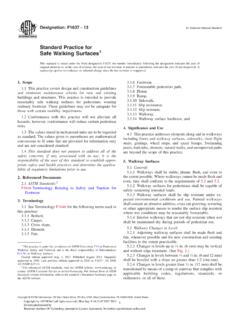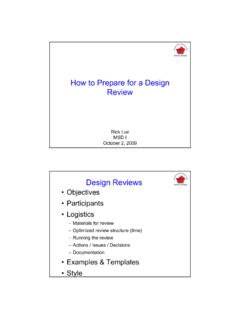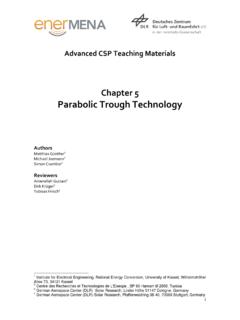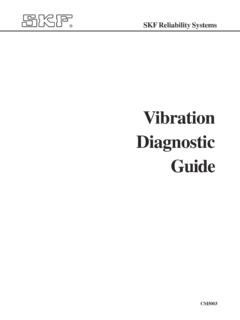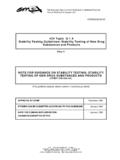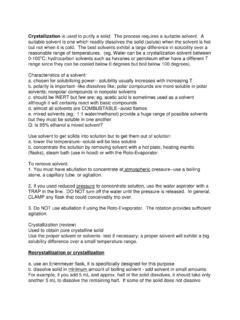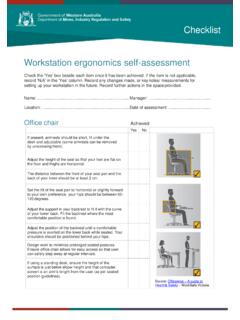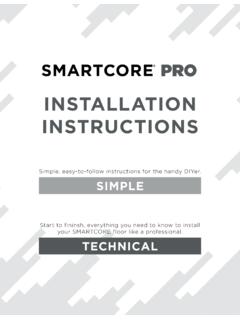Transcription of Design rules for vacuum chambers - Rochester Institute of ...
1 Design rules for vacuum chambers C. Hauviller CERN, Geneva, Switzerland Abstract Producing a vacuum chamber means defining the boundary conditions (inner and outer envelopes, operational constraints, etc.), choosing the material, designing the parts, manufacturing and assembling these parts together and putting them under vacuum . This paper gives the methodology, methods and hints for designing vacuum chambers . 1 Introduction The first step in the mechanical Design of a vacuum chamber is to clearly define what all the boundary conditions are and often this is not the easiest part of the job since most of the parameters are settled by the other systems making up the equipment, in the large sense, to be built.
2 The vacuum chamber arrives late and should simply fit in what is left! The material is a subject of long debate, still alive, even for usual types of equipment. The initial phase, the conceptual Design , which usually does not need accurate studies, is followed by the detailed Design , the latter strongly associated with the manufacturing, itself controlled by a quality assurance plan. This paper on mechanical Design is intended to go through all the steps mentioned above. It is difficult to be exhaustive and we shall not be, since what we deal with will be related not only to accelerator equipment on the beam lines but also to other vacuum vessels for services such as cryogenics.
3 However, the vacuum vessels we consider are static, the ones which move being subject to specific rules not presented here. Methodology, methods, and hints will be given, but consultation of some of the references is a must if you have to Design such a system yourself. References on general mechanical Design are not quoted here since there are many. Reference [1] from the 1999 CERN Accelerator School on vacuum Technology could be very useful. It is also important to remember that a classical rule, valid for any type of equipment, is that more than 70% of the final cost is already defined at the end of the Design phase.
4 Investing more during the initial phase is always rewarding! 2 Boundary conditions Environment To determine the environment is clearly the first step. The sub-sections are not necessarily exhaustive, but the list of physical phenomena influencing the Design of vacuum chambers is probably complete. Outside If the external envelope is simply the volume where the chamber will sit, the situation should not be very difficult when it is located inside a large building, but fitting a vacuum chamber/beam pipe of a particle accelerator inside an optimized gap of magnets may be much more constraining. Adequate 31space for supports will inevitably simplify the Design of the chambers .
5 In addition, space and access to the pumping ports and to the pumping and diagnostics equipment could also be very restricted leading to stringent consequences on the operation. Make sure that you give your requirements before it is too late. Inside The beam envelope is the main parameter for the vacuum chamber of an accelerator, but the conductance is another one in case of lumped pumps: the pressure distribution between two pumping ports is parabolic and the maximum value of this parabola defines the operating pressure. Distributed pumping is a solution, at least partially. For a cryogenic system, the inner piping and its insulation layers define the inner envelope, but do not forget to include extra space to allow for the movements resulting from pressure and temperature variations.
6 Pressure and forces The differential pressure on a vacuum chamber is obviously one bar during operation but it is recommended to check what all the intermediate steps are like, for example, an over-pressure test for qualification. In the presence of a closed end, the resulting forces could be large and the Design should take into account the transmission of these forces to the fixing points through the vacuum chamber wall. Temperature Specifying operating temperature (usually room temperature), bake-out temperature (usually between 150 C and 300 C), and exceptional temperature in the case of an incident (like a cool-down due to cryogen losses) together with all the transitories is a must.
7 The effects of temperature are dilatations, stresses and changes of material properties and they may have destructive effects if badly mastered. Slow temperature transients allow the resulting stresses to be minimized but it becomes an operational constraint that is not necessarily acceptable. Specific cases To be complete, one should go through cases of vacuum chambers submitted to specific constraints or dedicated to special applications. Important local heat loads, like synchrotron radiation, should be evacuated through good thermal conducting materials. Electrical impedance is reduced with a good electrical conductivity but, on the other hand, non-conducting material is required for electric isolation.
8 Activation of material by the particles hampers the functioning of the equipment, delaying access to an accelerator after switching off and producing radioactive components that are delicate to handle. Elements with long half-lifetime must be avoided in the materials in order to reduce the activation level and minimize the decay time. Should particles inside the vacuum chambers escape, either as a secondary beam going through a window to reach targets or generated by collisions and to be analysed by surrounding detectors, the parameters defining the transparency to particles, the radiation length (X0), and the collision length must be considered.
9 Materials Choosing the material for a vacuum chamber often leads to wide discussion of their principal properties. The material parameters Design for the vacuum chamber in terms of mechanics could be C. HAUVILLER32quite numerous, but there are only three main ones: the modulus of rigidity (Young s modulus: E), the elastic ( ) and rupture ( r) limits. These parameters are usually easily available for any material. A simple analysis of traction/compression tests is a common practice. Figure 1 shows a typical shape of traction curves of metallic materials. It shows how to define the yield or elastic limit.
10 The modulus of rigidity is obtained through the value of the slope of the quasilinear part of the curve. Fig. 1: Traction curves of metals More sophisticated tests like biaxial ones are required only for very specific cases. Other parameters like creep data, fatigue limit, fracture toughness could be useful for specific Design but usually complicate the choice of material. These parameters decrease when the temperature increases, creep weakens the material and, as a rule of thumb, the upper temperature limit of usage of a metal is 70% of its melting temperature in degrees kelvin. Another factor not to be forgotten is the vapour pressure which depends upon the temperature and the pressure.

